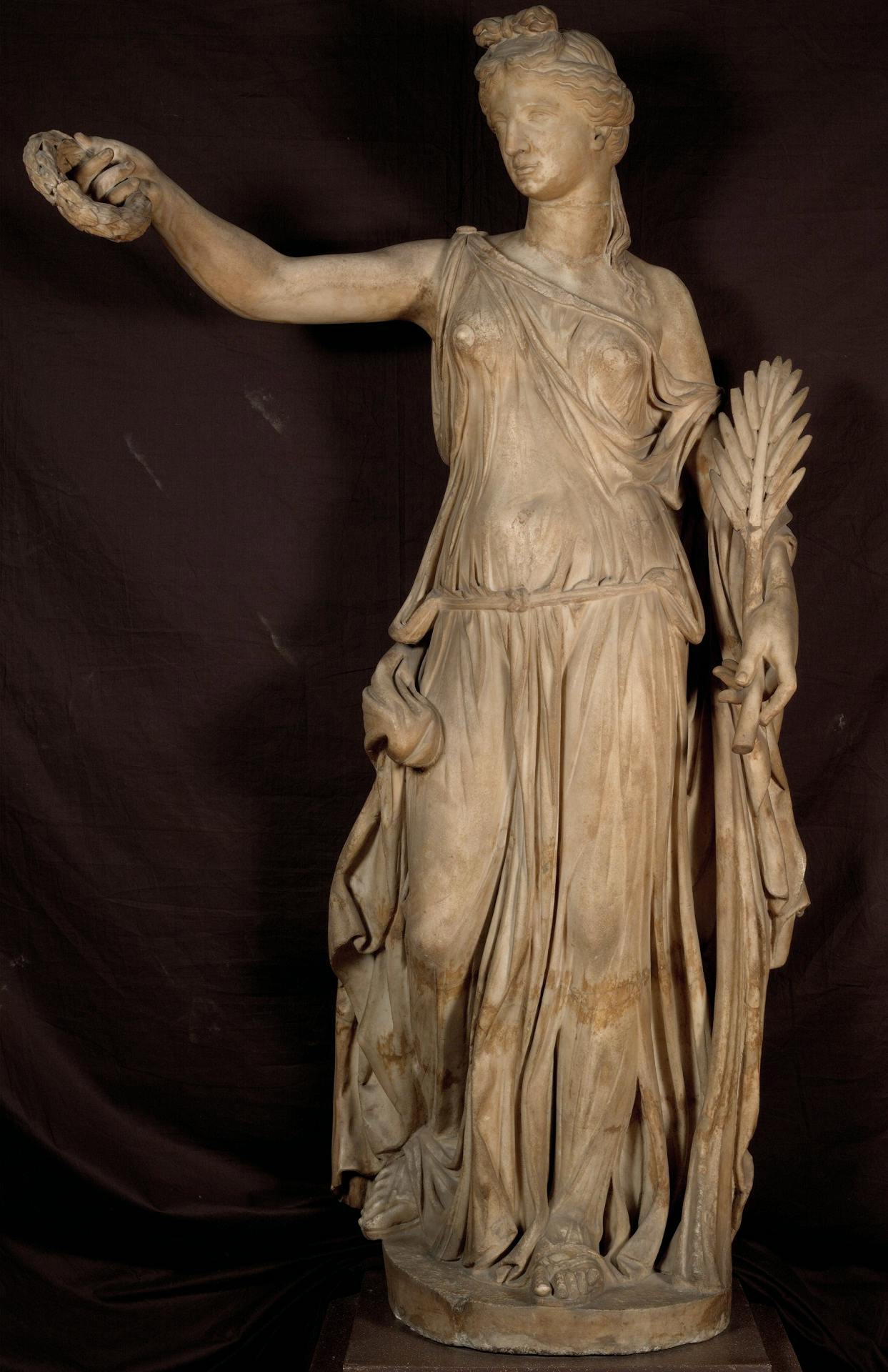Victory
Roman art
The statue, donated around 1584 by Cardinal Cesi to Francesco I de' Medici, has a restored head and neck, as well as the right arm up to the shoulder, the left forearm with the palm branch, the tips of both breasts and some flaps of the robe. The body is made up of three large fragments, reassembled and filled in the gaps. The female figure, covered by a long robe (chiton) and with a cloak on her shoulders, has therefore been interpreted as a Victory only by virtue of a series of attributes integrated by the modern restorer, while the anomaly constituted by the absence of wings was explained in the past by references to similar works of art testified to by ancient sources. Today we are more inclined to identify the subject as a statue of a female dancer, recognising it as an eclectic reworking by workshops of the early 2nd century AD of older Hellenistic models.
A. Romualdi (a cura di), Studi e restauri. I marmi antichi della Galleria degli Uffizi, III, Firenze, Polistampa, 2010 (con contributi di F. Guidetti, Osservazioni sulla Vittoria Cesi, pp. 114-128) e bibliografia precedente.
